History preserved in possibly NZ’s biggest collection
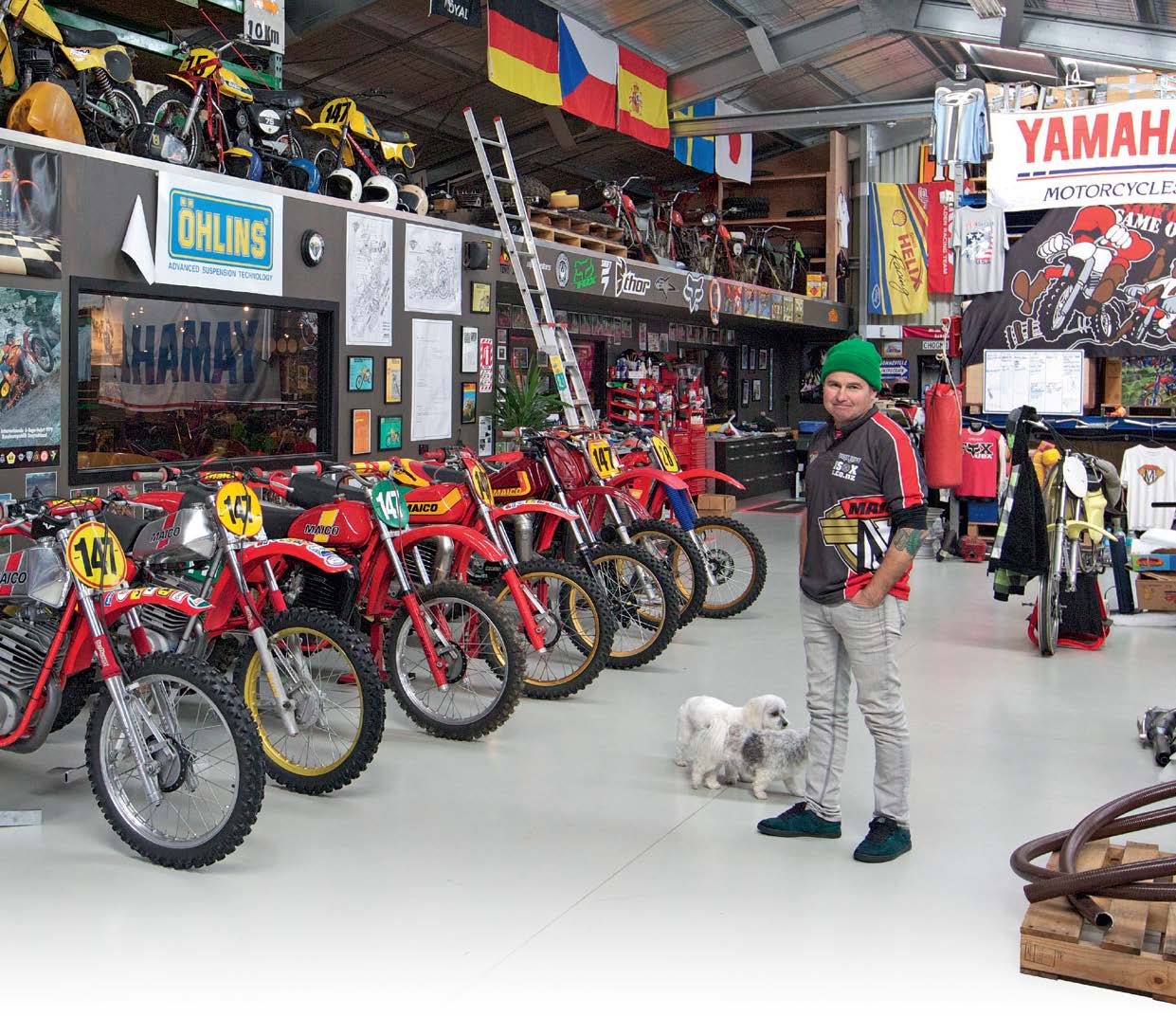
Steve Gallichan and his collection of vintage Maico bikes. Maltese cross pets Alfie and Bella
in attendance.
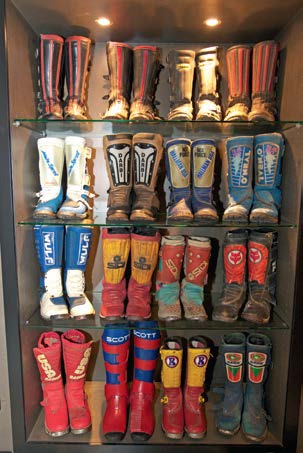
Getting off road on a motorbike and racing against others on the dirt is an adrenalin sport
and fun activity that’s been enjoyed by many for the last 100 years. It’s nothing new; the thrill of dirt bike racing goes back to before World War I, when motorbikes first became popular. The bikes have evolved from those early chugging machines into the high performance bikes we see today, but the excitement is the same. The big difference is that high speed racing today means a bigger adrenalin rush. One rider in Taranaki has a huge shed with a collection of restored vintage motocross bikes, a gleaming record of these machines that blatted across paddocks and tracks in the 1960s, 70s and 80s. Steve Gallichan began riding dirt bikes when he was aged seven. He used to roar around his family’s two-hectare farmlet in Hawera on a Honda SL70. At age 12, he began competing at meets in Taranaki on that little 70cc bike with other young lads and when no kids turned up he rode with the adults.
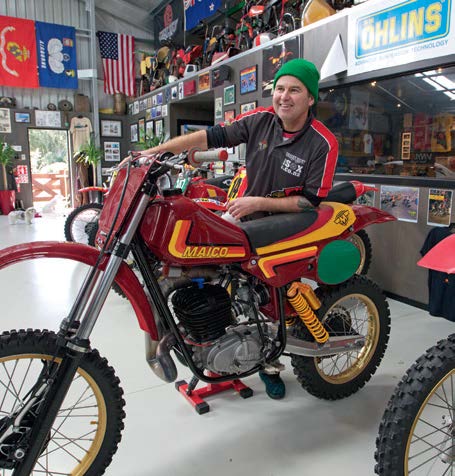
The 250cc, 1981 Mega2 Maico, one of Steve’s favourites, voted the world’s best motocross bike in its day.
Self-taught
Steve is a self-taught mechanic. When he was aged 9, his father got him to strip the bike down to nothing and re-assemble it. “Dad said ‘if it still goes it’s yours’,” Steve recalls. He did the job and the bike still went. He got the bug then and it’s still a thrill today. “Dad had a scrap metal business, and while helping him I learned from an early age about the different metals and how things worked,” he said. In 1974, John Burling, who worked for Steve’s father, was racing motocross. Steve used to go along and watch and pick up some tips. They modified that Honda 70, put on some knobbly tyres and imported some high-performance parts from the
US to hot the engine up, but by then he had grown out of it.
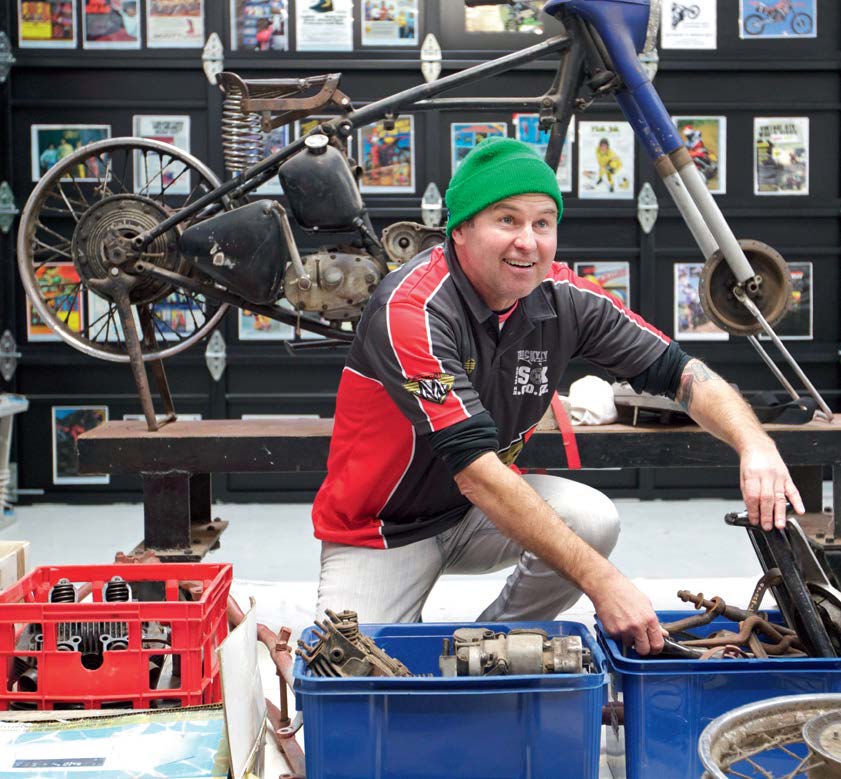
A 1951 Triumph T5 Speedmaster frame and boxes of bits from Trade Me for restoring…
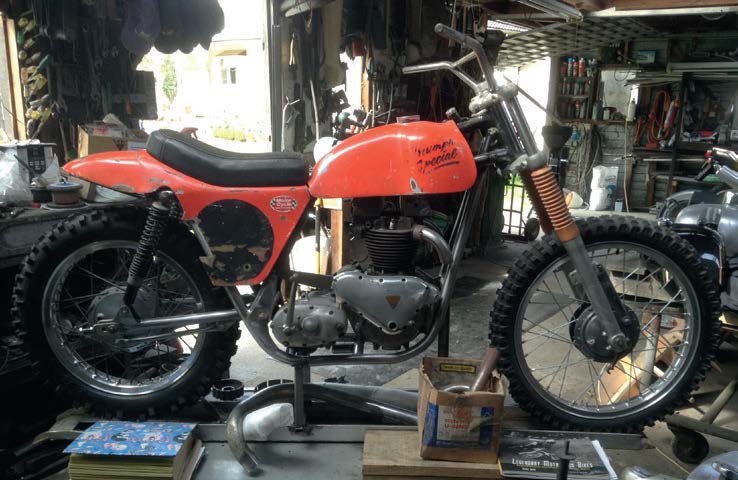
…a rare 1965 Spartan Triumph Special scrambler.
These old bikes can still do it. The new bikes may be a bit lighter and have more power,
but these machines were really well made.
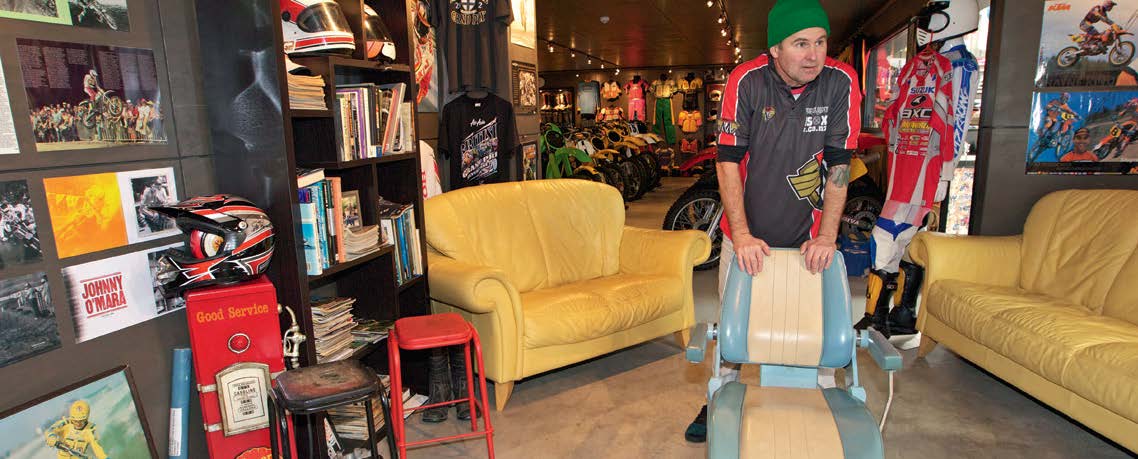
Winner of the regular shed meetings draw gets waited on in the
dentist’s chair.
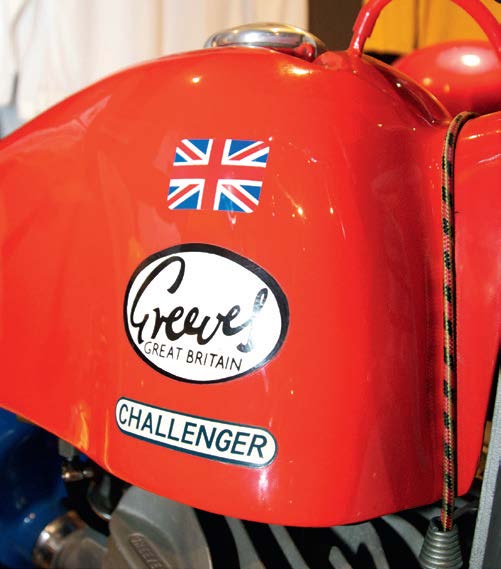
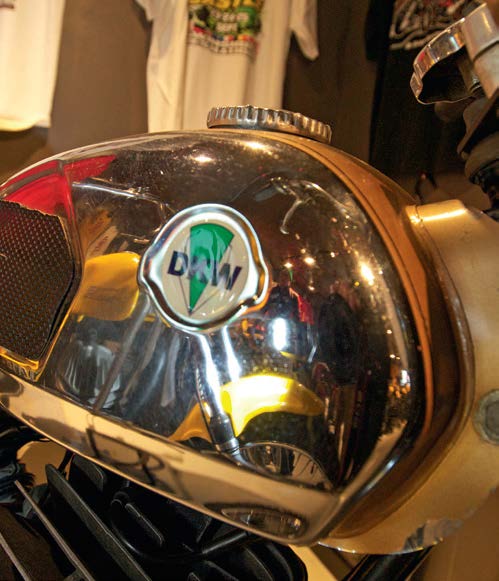
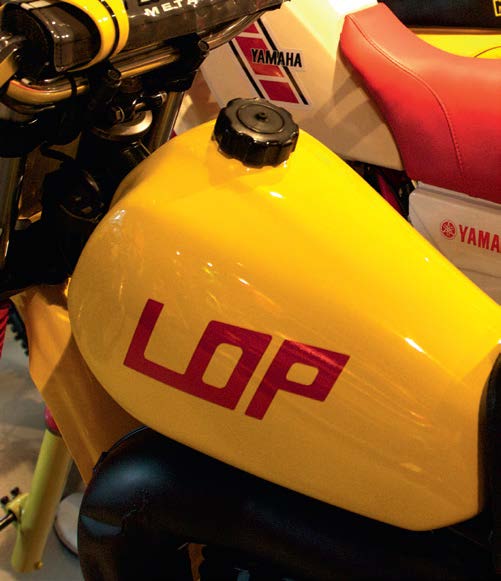
Steve moved up to a Suzuki 125cc then up to a 250cc bike as things became more serious. After a ten-year break, setting up various businesses and raising a family, he began seriously
collecting vintage bikes with help from his wife Michelle. He now has on display about 80 bikes from all over the world, dating back from the early 60s to the late 80s. Most are fully restored
and in pristine condition. “I’ve been hoarding shit for 20 years but it’s only during the last 10 years I’ve really concentrated on building up the bike collection,” said Steve.
From 1975
First up inside the door are the race bikes, a row of West German Maico motocross bikes, dating from 1975 to 1985. These are in immaculate condition and like most of the collection have been completely rebuilt. Among them is a 250cc, 1981 Mega2 model, one of his favourites, which was voted the world’s best motocross bike in its day. Steve still rides these bikes. While most of his riding these days is at vintage motocross meetings, he has competed successfully against modern bikes with the Maicos. “These old bikes can still do it. The new bikes may be a bit lighter and have more power, but these machines were really well made.” Lined up in the showroom part of the shed is an international collection of bikes. The collection includes a 1972 AJS Stormer with a Villiers engine; a 1979 360cc Spanish Montesa H6; a rare Italian 1985 500cc Cagiva; a 1962 English Greeves bike; a 1985 US-made 609cc ATK; a 1974 Spanish 125cc Bultaco; a Swedish Husqvarna; a CZ bike from Czechoslovakia and wide range of Japanese machines.
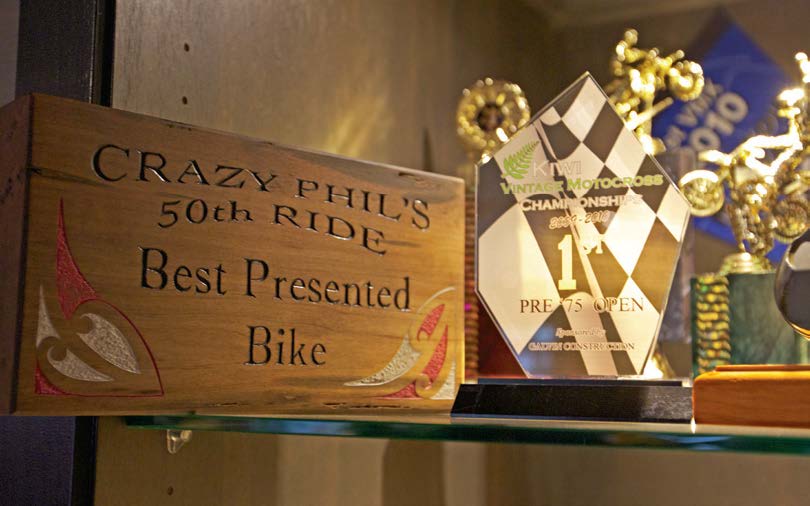
Trophies representing Phil Grant of Norsewood and Steve’s vintage 1974 Maico 440 GP vintage bike.
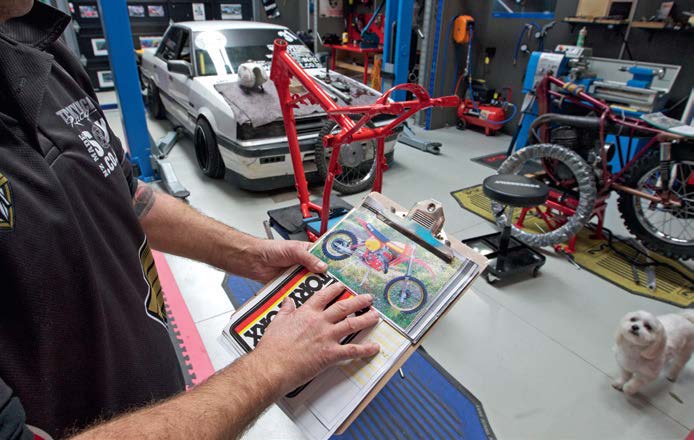
Honda CR 250 RZ under
restoration…
Vintage
Vintage motocross gatherings have become very popular in the last ten years. The Taranaki group, called Taranaki VMX Riders, has a keen following, and they meet regularly in Steve and Michelle’s shed to talk bikes, have a few drinks and watch videos of racing. In the centre of the floor is an old adjustable dentist chair, and the person who wins a draw gets to be the one who sits in the chair and gets waited on during the evening. From all accounts the boys have had some interesting evenings in the shed. The 2013/14 events calendar the group has put out is full of fun days and competitive meetings for the many classes of vintage bikes.
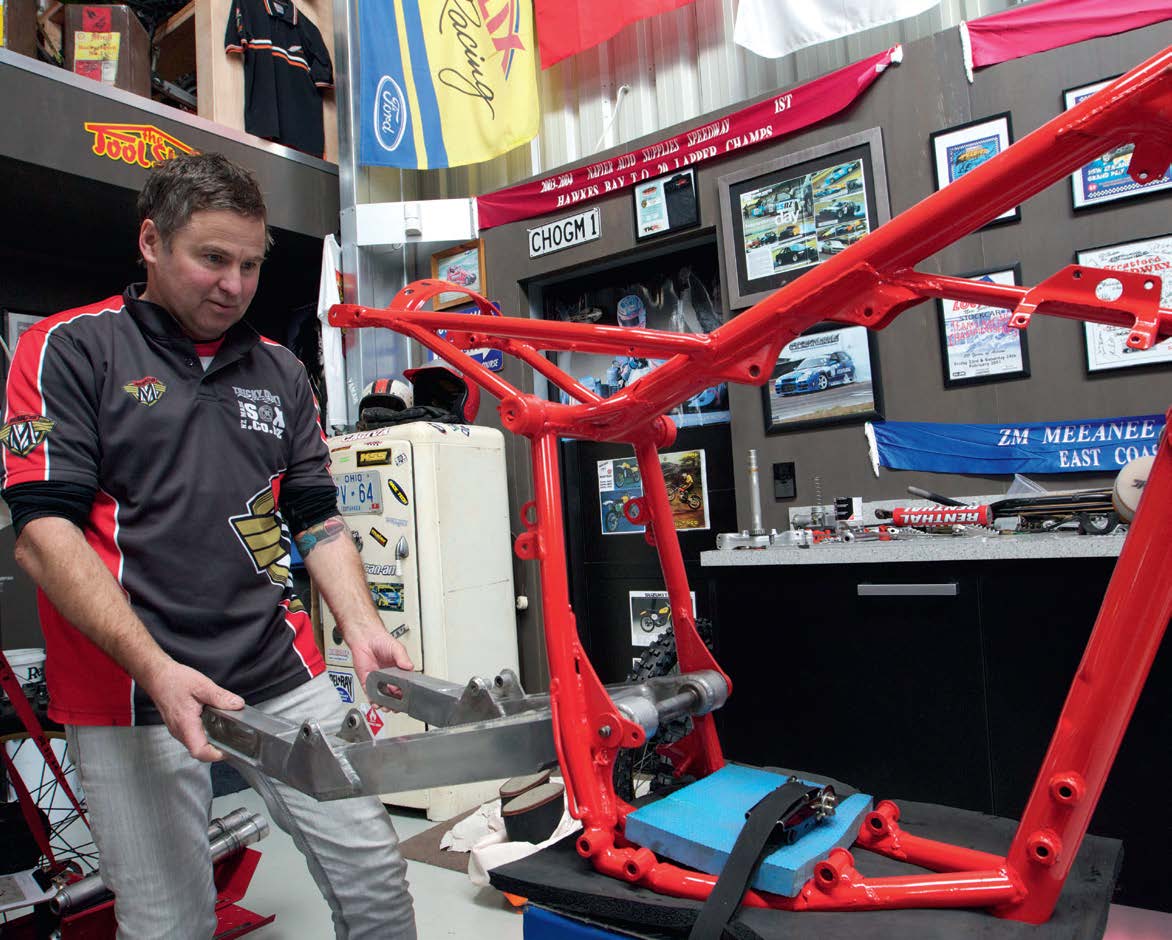
…from the frame up.
Shed
The Gallichans’ shed is a beauty. It was built three years ago. “It’s 4480 square feet in size [416 square metres], that’s twice the size of our house, as my wife Michelle often reminds me,” he said with a grin. The couple moved to a section and built their house just under Mount Taranaki near Egmont Village, in 2010. Many guys’ sheds are a bit grubby but this shed is spotless. It might be full of dirt bikes but there’s no dirt to be seen. You wipe your feet when you enter and even the workshop area is clean enough to eat your dinner off the floor. Steve said he has probably worked on about 150 bikes over the last nine years, both for his collection and doing up other people’s machines. His workshop is fully equipped and he even has his own forklift. He does TIG and MIG welding and has a metal lathe on which he makes up bushes, axles and threaded components. He sources parts for his bikes from all over the world, mostly through the internet.
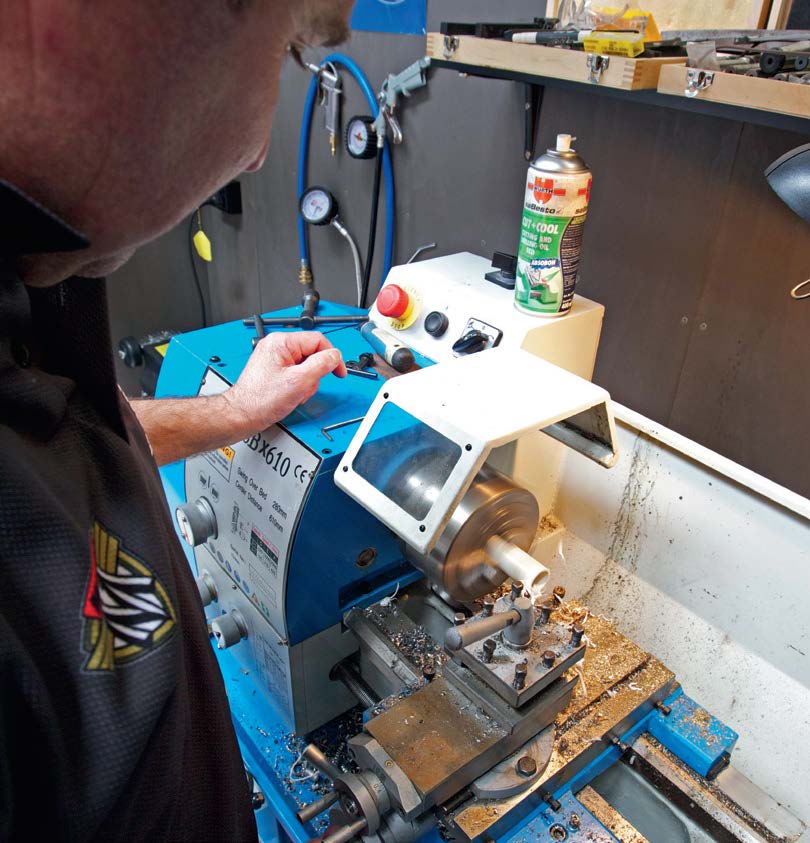
Lathe work.
Off-road riding
Motocross, dirt track riding, scrambles, enduro racing, call it what you will, it’s been around since before World War I when bike owners in the United Kingdom left the road to compete in the mud, in sprints, hill climbs and water splashes. The Yorkshire Moors were a popular place for these events at first. In the 1920s it became known as scrambling, and speed became the essence of the sport. Riders began to seriously race against each other. After World War II, the word “motocross” was born and at first many European bikes were being made for the sport. The 1960s saw a lot of development. Japanese bikes hit the market and the fast two- stroke engines became popular. The bikes became more sophisticated and specialised, and have been built faster and lighter every year since. Kiwis took competitive motorcycling to heart from the early years. The New Zealand Auto-Cycle Union (NZACU), now Motorcycling New Zealand, was set up in 1916 to oversee motorcycling as a sport. Informal racing had taken place as far back as 1911 in New Zealand—we were well up with the play. The Motorcycling New Zealand website records that Tim Gibbes is regarded as the man who brought modern motocross to New Zealand. He won the NZACU trophy for the national Jubilee Motocross when they celebrated 50 years in 1965. Over the years we have had a proud history, nationally and internationally on the track. The New Zealand team has three times been on the podium at the international Motocross of Nations in 1998, 2001 and 2006, with the likes of Josh Gibbons and Ben Townley in the team. In 1996 Shayne King won the World 500cc Motocross title. Many other riders have made their names on the international stage and the sport of motocross is as popular as ever. Motorcycling New Zealand now has 6000 members from 70 different clubs in New Zealand.
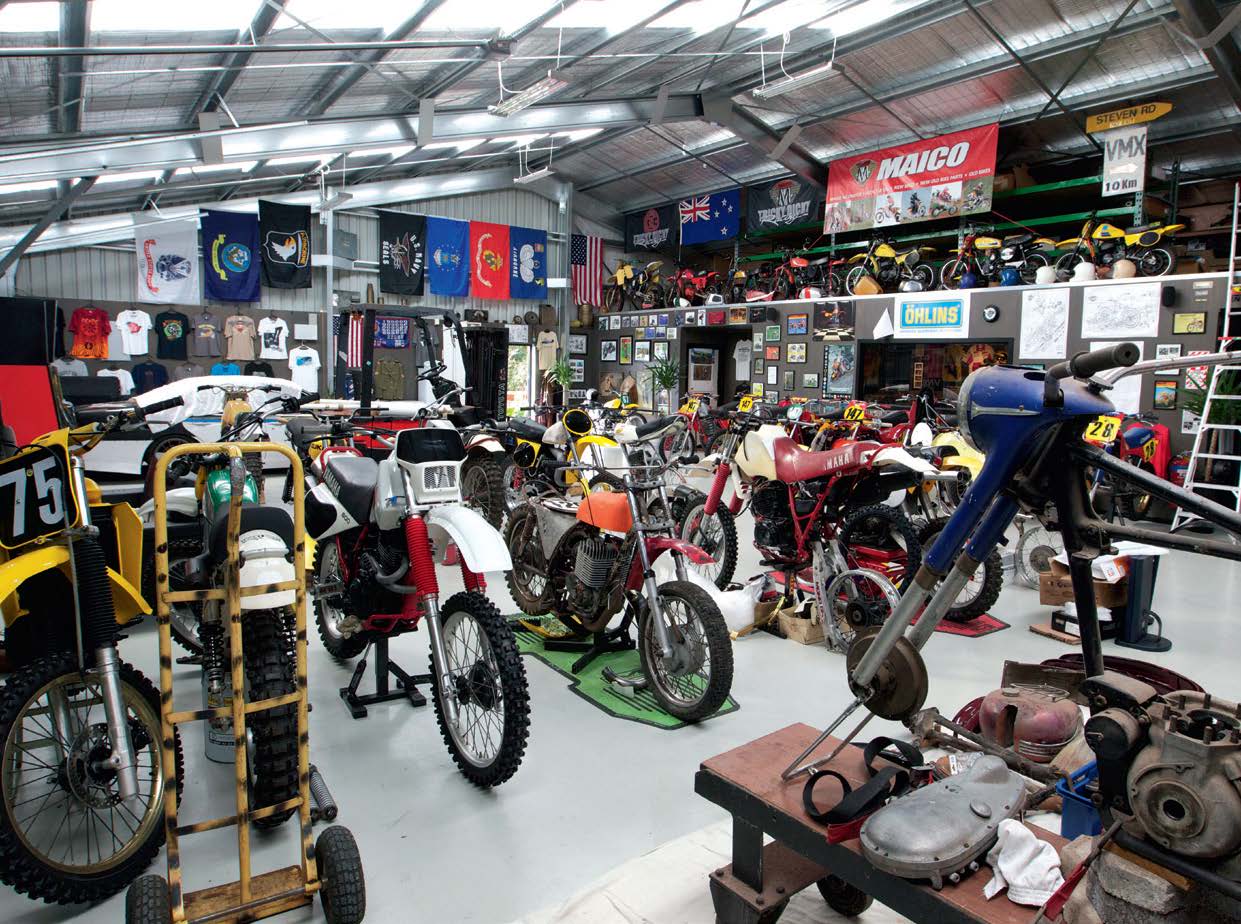
Working workshop.
Rarest
One of his rarest bikes, the pride of his collection, is a 1965 Spartan scrambler bike, built in the day by Steve Roberts in Wanganui. Roberts powered this bike with a Triumph 500 twin Pre-Unit engine. For engine spares for this bike, Steve recently acquired parts from a 1951 Triumph T5 Speedmaster. “I bought enough bits to build three bikes so I’ll keep the motor and gearbox and on-sell the rest. There are many collectors of these machines around,” he said. He also has a large collection of memorabilia. Alongside many of the bikes is a pair of well-worn riding boots and the walls are covered with jackets, posters, photos and many helmets dating from the 1940s to the 1980s. Steve calls his outfit Tricky Dicky Racing, and with help from friends and family he travels all over the country to meets and to pick up parts and bikes. The collection includes a Honda SL70, the same model Steve began his riding career on as a 7-year-old. There’s no question that Steve’s collection of vintage bikes, possibly the biggest in the country, is preserving history, the story of motocross bikes of yesteryear.




